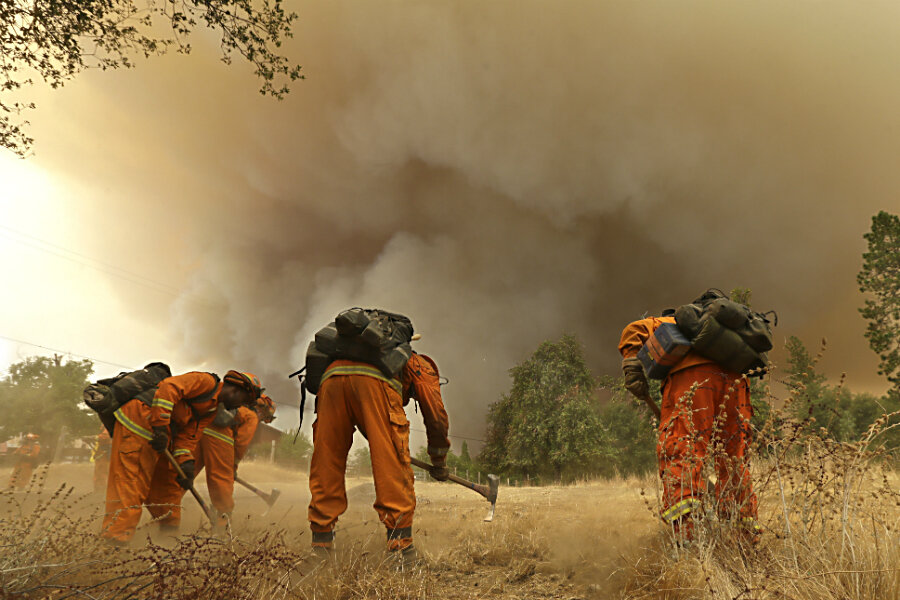Raging wildfires drive 23,000 Californians from their homes
Loading...
California officials say about 23,000 people have been displaces by two massive wildfires.
California’s historic drought has provided ample fuel for wildfires this season.
Some 13,000 people have been driven from their homes by a wildfire 20 miles north of the famed Napa Valley, according to Mark Ghilarducci, director of the governor's emergency services office. Another 10,000 people have been displaced from a second blaze less than 200 miles away in the Sierra Nevada foothills.
Up to 720 homes and hundreds of other structures, including businesses, barns, outbuildings, and infrastructure, were destroyed in the fires, according to the California Department of Forestry and Fire Protection.
Nearly 11,000 firefighters are currently battling the blazes. At least one person was killed and four firefighters have been reported injured.
The four injured firefighters suffered second degree burns and were in stable condition at UC Medical Davis Center.
The woman who died was a disabled, retired teacher, Barbara McWilliams, who had settled in the Middletown area in the last year.
Over the weekend, Gov. Jerry Brown (D) declared a state of emergency as an unspecified number of people remain unaccounted for.
During a press conference, the governor said the fires are "scary stuff" exacerbated by climate change and a four-year drought.
As of Monday evening, Cal Fire spokesman Daniel Berlant said containment is at just 5 percent.
In the midst of the seemingly insatiable fires, some homeowners in Northern California have been humbled by the feats of firefighters to save homes and lives, as Gloria Goodlae, reported for The Christian Science Monitor:
After the fire kicked up Saturday night, former Marine Greg Candlario says, “We put everything we could in the car.” But they couldn’t handle the animals with such short notice, so they opened the pens and let the horses and alpaca herd loose.
When he was allowed to return Sunday night, Candlario discovered, to his surprise and deep admiration, that the firemen had rounded up the livestock and fetched hay to feed them.
According to the Associated Press, “Forecasters say Northern California weather conditions are changing as low pressure approaches the West Coast. That will mean cooling, increasing winds, higher humidity and showers, then more widespread precipitation Wednesday.”
This report contains material from the Associated Press.





